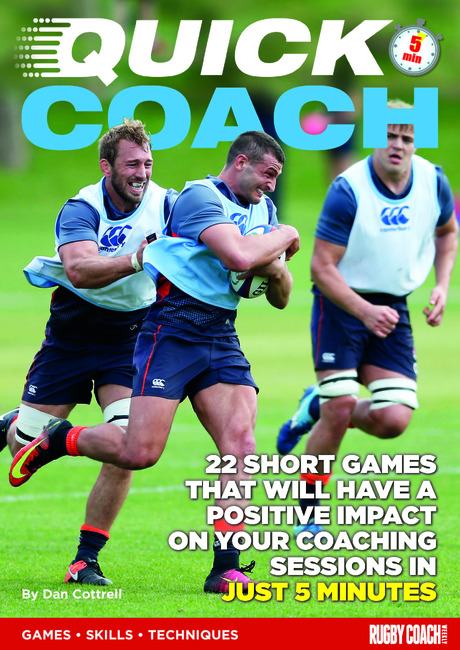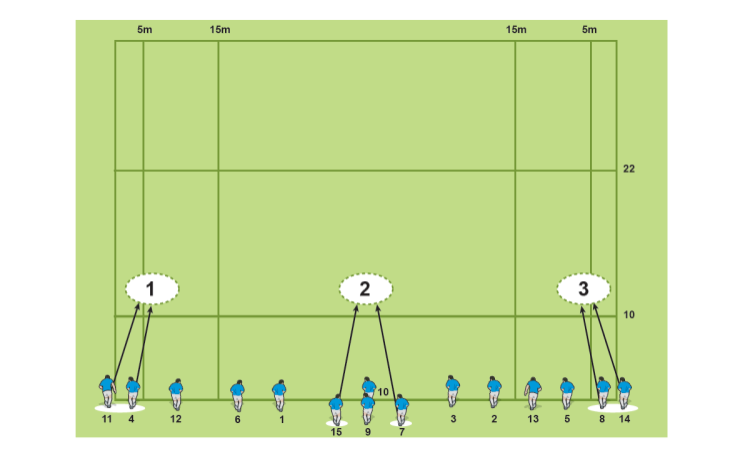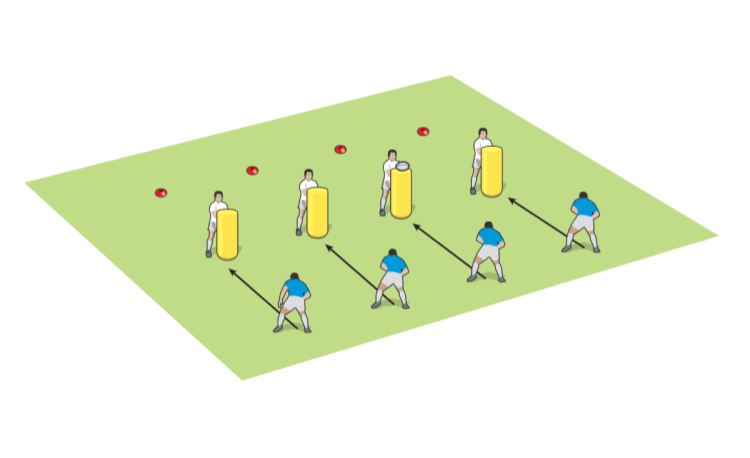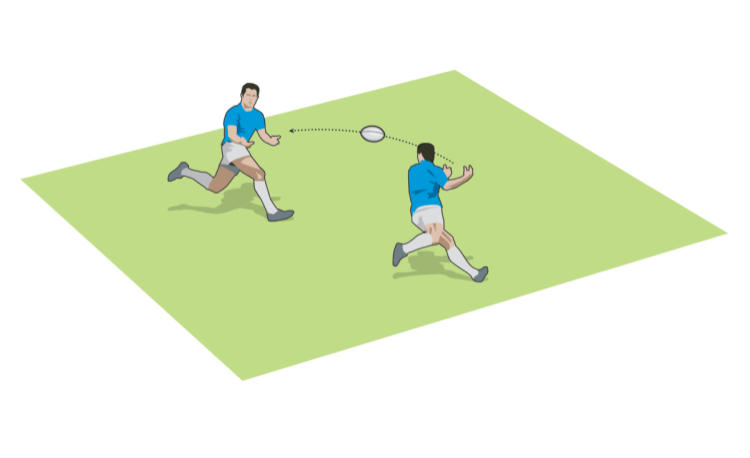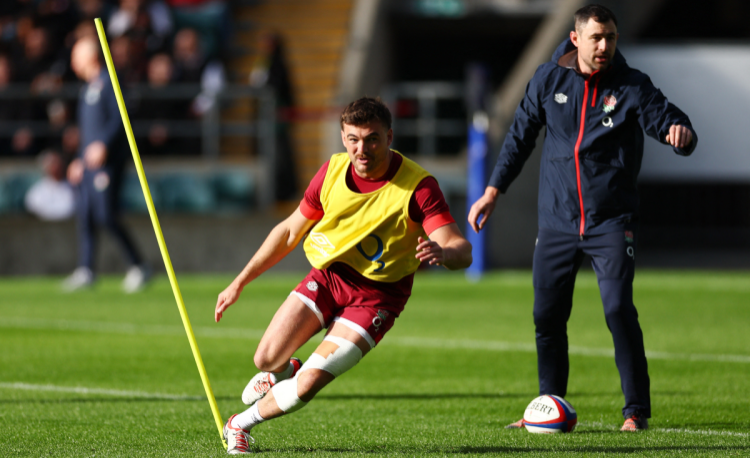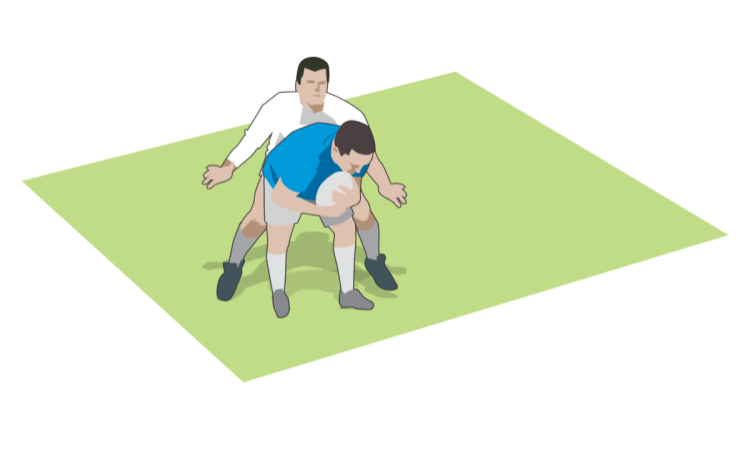You are viewing
1 of your 2 free articles
Quick Coach: Back to front 2v1s
CORE SKILLS
- Passing
- Footwork
- Decision-making
- Deception
- Tracking
THE STORY
“The supporting player starts in front of the ball carrier, while the defender has his back to the attack. When you shout play, with the supporting player walking forward and the defender out of position, the players will have to think quickly to come up with winning solutions.”
SET UP
A 10m square and ball.
HOW TO PLAY
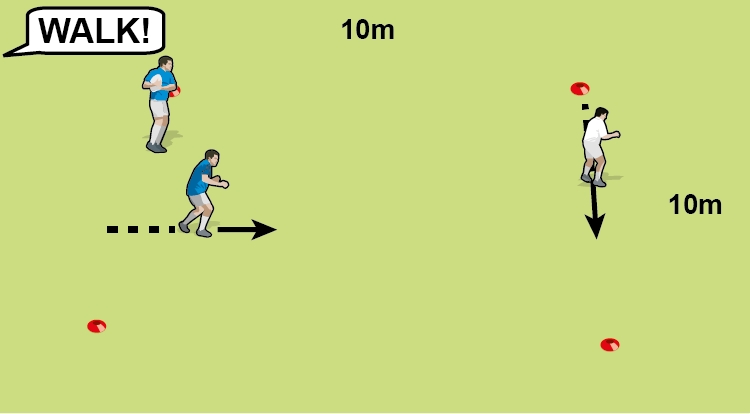
- Put a ball carrier at one end of the box, with another attacker about 5m to the side.
- Put a defender at the other end with their back to the ball carrier.
- When you say “Walk”, the non-ball carrier walks slowly forward, while the defender moves sideways along their end of the box.
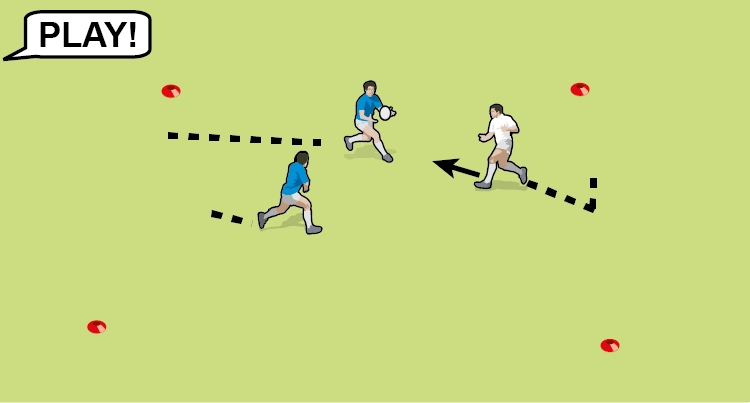
- When you shout “play”, the attackers aim to score at the far end, while the defender turns and aims to touch tackle the ball carrier.
- There are no forward passes allowed, so the non-ball carrier will have to realign in some way relative to the ball carrier.
DEVELOPMENTS
- Adjust the starting points for the attackers and defender.
- Have the non-ball carrier start from the middle of the box, but walking back towards the attacker.
- Allow kicking.
NUMBERS
With five players, create a three v two, with the two non-ball carriers walking forward.
Related Files
Newsletter Sign Up
Coaches Testimonials

Gerald Kearney, Downtown Las Vegas Soccer Club

Paul Butler, Florida, USA

Rick Shields, Springboro, USA

Tony Green, Pierrefonds Titans, Quebec, Canada
Subscribe Today
Be a more effective, more successful rugby coach
In a recent survey 89% of subscribers said Rugby Coach Weekly makes them more confident, 91% said Rugby Coach Weekly makes them a more effective coach and 93% said Rugby Coach Weekly makes them more inspired.
Get Weekly Inspiration
All the latest techniques and approaches
Rugby Coach Weekly offers proven and easy to use rugby drills, coaching sessions, practice plans, small-sided games, warm-ups, training tips and advice.
We've been at the cutting edge of rugby coaching since we launched in 2005, creating resources for the grassroots youth coach, following best practice from around the world and insights from the professional game.
